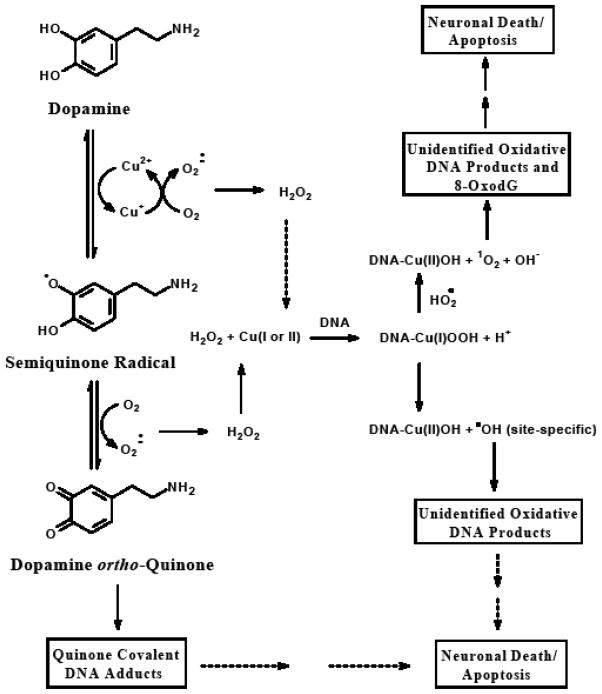Figure 7.
Proposed role of ROS in dopamine-mediated oxidatively generated DNA damage and subsequent neuronal cell death. The auto-oxidation of catecholamine neurotransmitters, such as dopamine, and related catecholamines, is substantially enhanced by the presence of transitions metals, especially copper, in their oxidized form. In the presence of O2, these catechols can redox cycle producing quinone metabolites, which can bind directly to DNA forming covalent DNA adducts, via semi-quinone intermediates while simultaneously reducing the metal. Superoxide is then generated by the reduction of molecular oxygen followed by the re-generation of the metal to its oxidized state. Superoxide can also react with Cu(I) to produce H2O2 which then can complex with either Cu(I) or Cu(II) bound to DNA to form DNA-Cu(I)OOH. Following the formation of this DNA-Cu(I)OOH a variety of oxidative DNA lesions, including the unidentified oxidation DNA products studied here, result due to the production of hydroxyl radicals at site-specific regions of the DNA. Singlet oxygen may also be produced from this complex yielding 8-oxodG.

